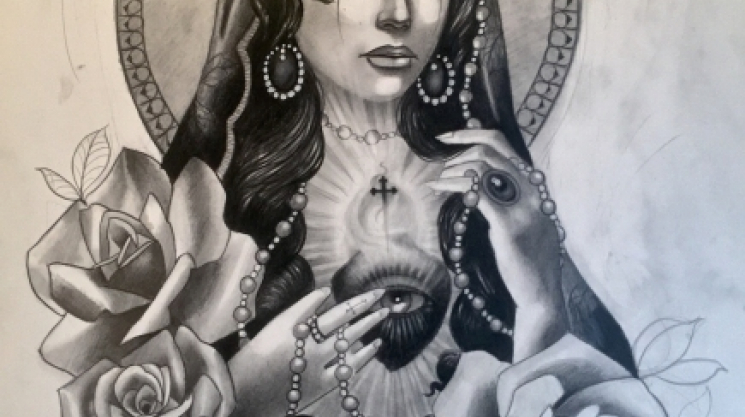
Wed, 06/08/2016 - 13:53 by karyn
In its most general form, anatomy is the "study of the structure of internal working of something." Specifically, it is defined as "the branch of science concerned with the bodily structure of humans, animals, and other living organisms, especially as revealed by dissection and the separation of parts." What if anatomy could also be the grammar in a language, say in art?
In the Middle Ages, people took very little interest in the human body as it was seen as sinful and the cause of temptation. At that time, the body was really only a temporary vessel for the soul. Such little interest in the bodily structure was depicted in the art produced: never were the paintings of naked bodies respectful of real life observations. During the Renaissance, artists were eager to learn about human anatomy, allowing them to paint and sculpt the body in many different positions. Whatever art they created showed their attempt at understanding the system of muscles beneath the skin.
Nowadays, anatomy still keeps an important status in the arts -— sometimes to help realistic artists reproduce or create any bodily representation and sometimes to effectively rupture society's accepted view of the body. In that sense, Montreal-based artists Veronique Imbo, Kristofer Dompierre and Zacharie Potvin Williams all share one same thing: a glimpse at further understanding the very notion of what it is to be human.
Recognized as one of the greats in terms of realistic tattoos, Veronique Imbo works at Tattoomania in Montreal, alongside great inspiration and mentor Pierre Chaplan. It was at a very young age that Veronique first talked about tattooing to her parents. In spite of not being receptive to the idea of their thirteen-year-old aspiring to a tattoo artist career, they weren't against art in its more socially acceptable forms. As a matter of fact, Veronique recalls her dad having her reproduce portraits of her great-grandparents, suggesting she could have her art showcased at the next family gathering and maybe even sold – that is if the results were neat enough. Ten years later, while in the process of obtaining her CEGEP Visual Arts diploma, she started hanging out at a local tattoo shop, which sooner than later led to an apprenticeship. Now at the age of 31, the young tattoo artist has spent the last six years at Tattoomania, although frequently traveling to attend different workshops, private classes, and seminars. "My job often requires me to reproduce pictures, which is great, but a brain doesn't work the same way when it's reproducing something real. That's what we study [in the workshops] and that's what later helps me get a better understanding of what's going on in the picture."
Whether they be from George Bridgman, Charles Bargues, Caravaggio or John Singer Sargent, classic influences related to anatomy or realism show in her tattoos, but aren't the only thing Veronique relies on. Through different workshops, she has gone from studying human anatomy with live models and cut-away drawing in Italy, to working with complementary and primary colors with Steven Assael in New York City, to neutralizing colours with a grey and orange scale for skin tones with Carl Dobsky. However, no workshop or seminar will ever change the challenges an artist specializing in realistic art can meet. "What's really demanding when tattooing is making straight details over rounded surfaces. For example, take a three-quarter frontal view portrait on an arm -— a cylindric surface. The proportions need to work regardless of if the drawing wraps around the arm or not."
For an artist specializing in realistic art, it should come as no surprise that two and three-dimensional artifacts require an outstanding manual dexterity and an understanding of lights and shades. According to Veronique, "Good contrasts give more depth to the tattoo". However, it's far from being the only key to success. Ever since the Renaissance, artists have recognized the importance of anatomical knowledge to make their own creative work stronger. Veronique Imbo is not one to oppose the statement. In fact, she believes working with live models is the best way to understand the human anatomy, a practice that she has been more serious about for the past six years. A good comprehension of body proportions as well as of the systems of muscles beneath the skin has proven to make all the difference in realistic art regardless of the medium. From Veronique's tattoo artist standpoint she feels she has the responsibility of endlessly perfecting her techniques. "You come to a point when clients become collectors and make appointments with you because they want your style and product. They're really open-minded and will let you do almost anything you want. But when you do realistic tattoo art, your work is based on a photograph, so you need to follow your reference. That's why it's so important to understand the human anatomy, to go to workshops and check out other artists' techniques."




Add comment